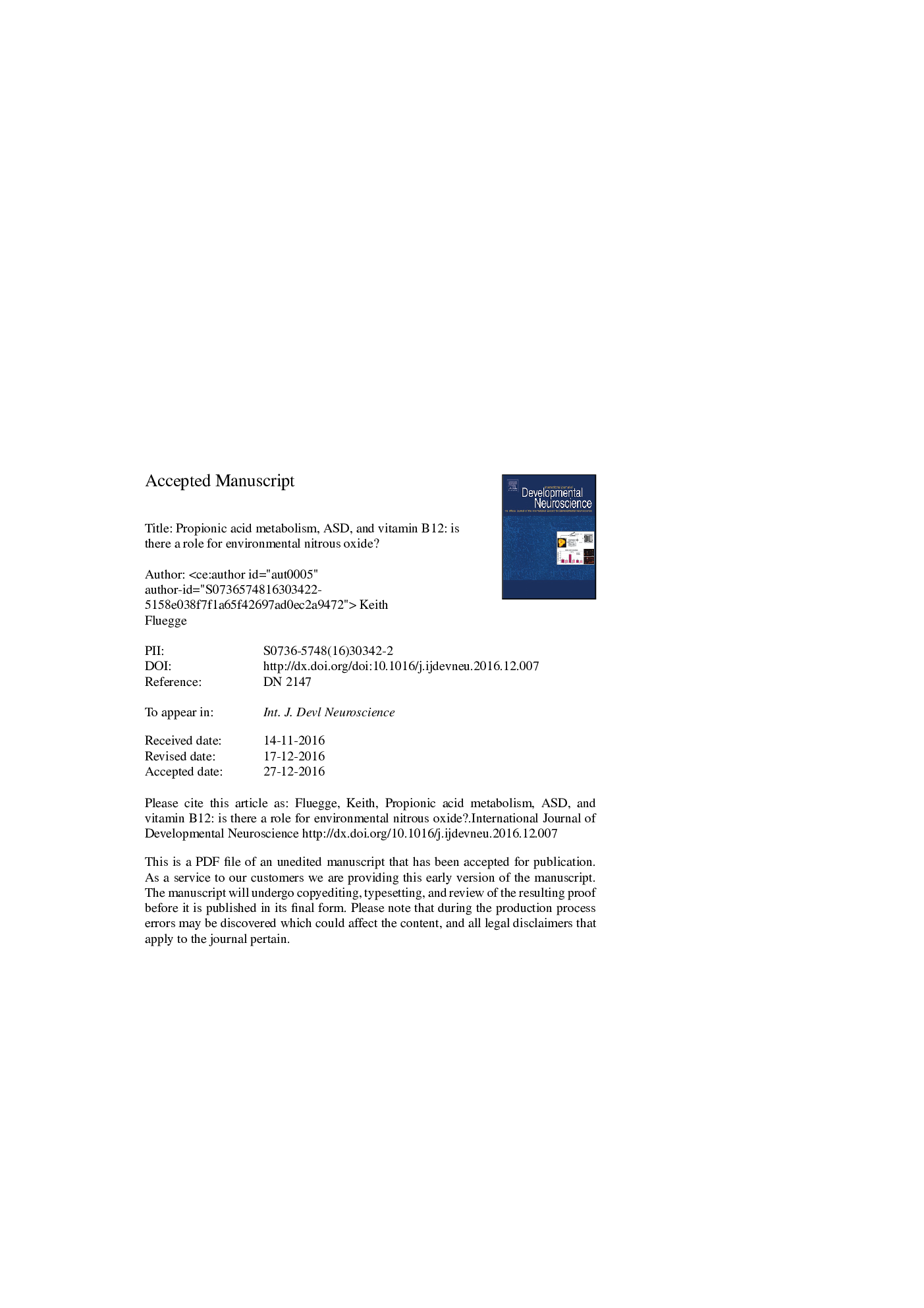| Article ID | Journal | Published Year | Pages | File Type |
|---|---|---|---|---|
| 5585760 | International Journal of Developmental Neuroscience | 2017 | 14 Pages |
Abstract
Foley et al. (2014) published their findings in this journal on the role of prenatal exposure to propionic acid (PPA) and behavioral outcomes in treated rat pups. The authors show that PPA treated pups displayed subtle differences in behavior including nest seeking, novel object recognition, and locomotor activity. Others have previously proposed that PPA infusion in rat could represent a valid animal model of ASD since many of the diagnostic criteria for the disorder spectrum manifest under such conditions. A pathogenic makeover of gut microbiome to facilitate the growth of microbes capable of producing PPA, like Clostridia species, has been proposed as an infectious contributing etiology to the PPA model of ASD, however the reason for this pathogenic microbial overgrowth is not clear. This discussion highlights a previously identified novel environmental factor (i.e., nitrous oxide, N2O) in the etiopathogenesis of ASD and related neuropathology and posits that altered PPA metabolism in ASD may represent a key manifestation of this particular exposure. Trace environmental exposure to N2O may induce release of endogenous opioid peptides that have been shown to confer a virulence advantage to certain microbes, like Pseudomonas aeruginosa. Pathogenic overproduction of PPA in ASD may be a compensatory mechanism to curb this enhanced virulence potential. Therefore, future research on the PPA model of ASD should consider its role as a consequence of environmental exposure to N2O.
Related Topics
Life Sciences
Biochemistry, Genetics and Molecular Biology
Developmental Biology
Authors
Keith Fluegge,
